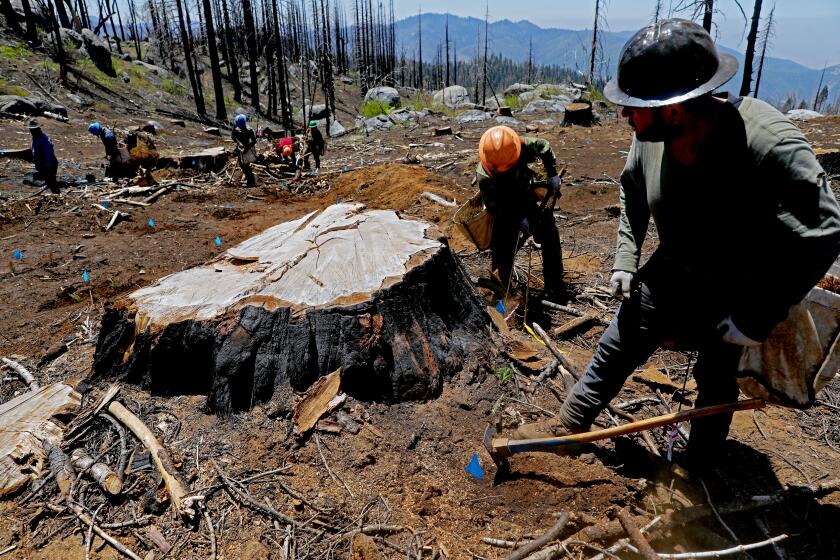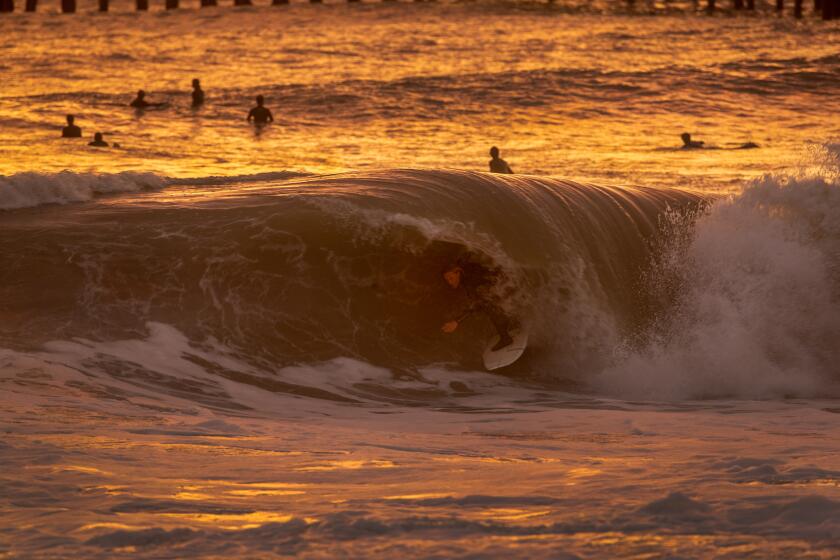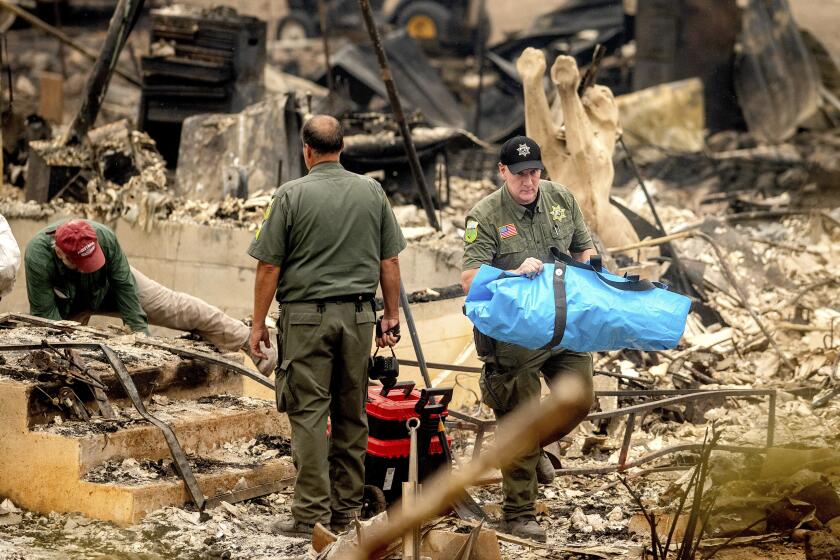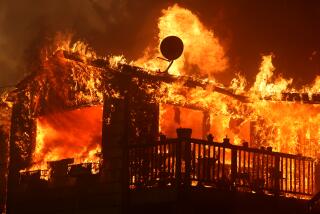Wildfire burn areas in California are growing ever larger due to greenhouse gas emissions
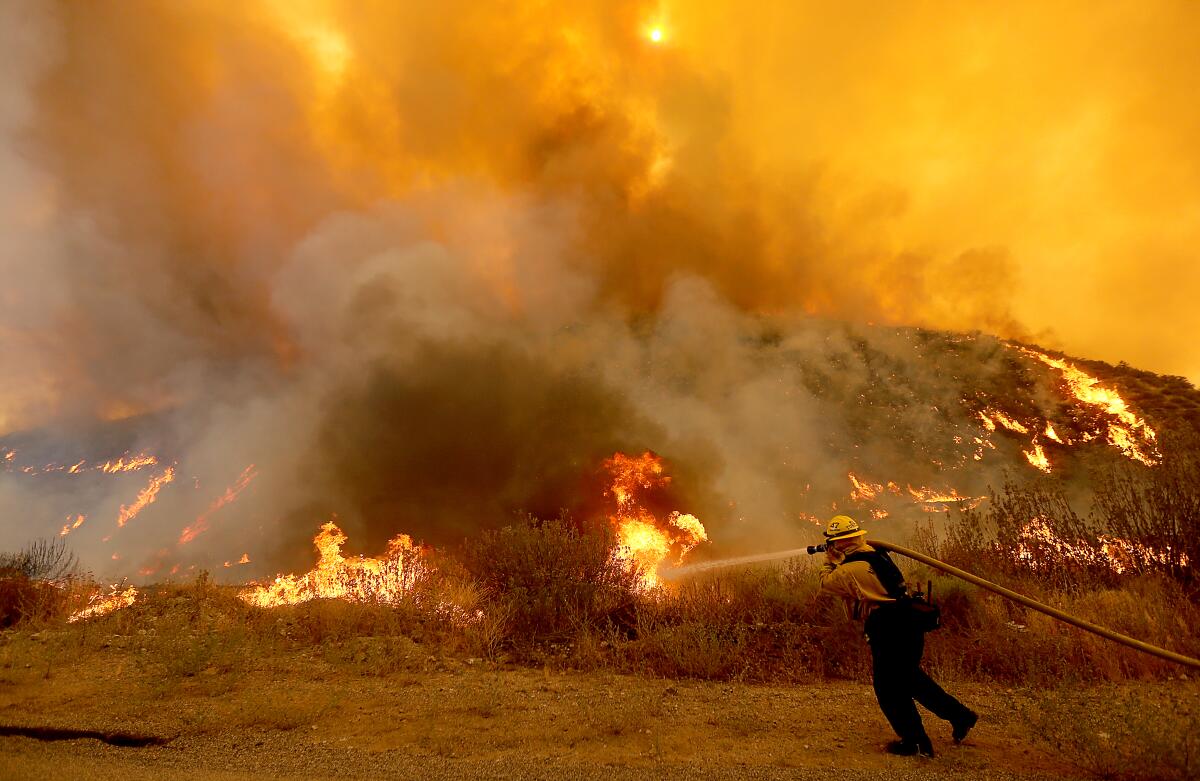
Although California may be enjoying a lull in this year’s wildfire season — courtesy of a wet winter and a cool spring — scientists say humanity’s relentless burning of fossil fuels has ensured that wildland fires will scorch ever larger portions of the state, perhaps as much as 52% more by midcentury.
While residents here have been spared the hardship of massive wildfires burning across the Canadian wilderness and the noxious smoke that has blanketed the eastern U.S., new research suggests California has yet to experience its worst fire season.
In a study published recently in the journal Proceedings of the National Academy of Sciences, researchers used model simulations to isolate the role of greenhouse gas emissions on California’s worsening conflagrations, as well as their future effects.
Study authors determined that California wildfires consumed five times more area between 1996 and 2021 than in the 25 years prior — an increase chiefly attributed to climate change.
Researchers also determined that the 50-year period as a whole saw a 172% increase in burn area.
“This is very, very high,” said study co-author Amir AghaKouchak, a professor of civil and environmental engineering at UC Irvine. “Even if it was much lower, still it would be significant, but 172% is really serious.”
Crews recently planted 30,000 giant sequoia seedlings in the western Sierra, as part of an ongoing effort to restore groves devastated by wildfire.
There are several mechanisms through which humans are contributing to larger burn areas, but one primary factor is temperature, he said. As greenhouse gases and other emissions drive global warming, hotter conditions help to dry vegetation and set the stage for larger and more severe fires.
AghaKouchak said similar attribution studies — such as those that look at the effect of climate change on extreme precipitation or heat waves — might show increases of 15% or 20%, “but then you look look at fire — 172% on average — that’s huge,” he said.
Indeed, the findings join a growing body of research that seeks to determine the role of climate change on extreme events. Last month, a similar paper found that 40% of forest area burned by wildfire in the western United States and southwestern Canada in the last 40 years can be attributed to carbon emissions associated with the world’s 88 largest fossil fuel producers.
In California, 18 of the 20 largest fires on record have burned since the year 2000, according to the California Department of Forestry and Fire Protection. Nine of those fires have burned since 2020, including the state’s first million-acre fire, the August Complex.
2020 was the state’s worst wildfire season on record, with nearly 4.4 million acres burned.
Unprecedented warming in the North Atlantic has startled some researchers. While global warming is the underlying cause, a variety of other factors are at play.
The researchers acknowledged that other factors have played a role in the state’s worsening blazes, including forest management practices that allowed for a buildup of vegetation that fuels fires, as well as the hazards caused by an aging power grid and more development in fire-prone areas.
They also noted that even without emissions, there would still be wildfires in California, which have long been part of the landscape’s natural cycles.
However, those variables can mask the signal of human-caused impacts, which are happening despite other external factors, AghaKouchak said.
“If the frequency is more than natural, then it is not just natural,” he said. “And that is the point here: what we see is significantly more than what would naturally happen without anthropogenic emissions.”
And while some might assume that the size of burn areas will start to decrease in the coming years as more vegetation burns, the study found the opposite to be true. Even when considering limitations from that so-called “fire-fuel feedback,” average annual burn areas could see a 3% to 52% increase from 2031 to 2050 depending on future emissions and other variables, the study found
That’s largely because overall temperature increases will continue to prime the landscape for fire, said study co-author Yizhou Zhuang, a postdoctoral researcher at UCLA who studies fire weather and drought.
At the same time, climate change is also contributing to more bouts of extreme weather — such as the atmospheric rivers that soaked the state this winter — which can spur more vegetation growth to fuel future flames, Zhuang said.
“I think it represents a very significant advancement toward holding our human-caused climate change accountable for the recent exacerbated fire activities,” he said of the study.
All four deaths in the McKinney fire highlight how older people are more vulnerable to wildfires and more likely to live where they are commonplace.
The findings suggest that California residents will be increasingly affected by wildfires, which have not only grown larger and more frequent, but also more fatal. More than half of the state’s 20 deadliest fires have burned since 2000, according to Cal Fire.
The Camp Fire, which raged through Paradise in 2018, killed 85 people. Last year’s blazes killed nine — many of them elderly people who could not escape from fast-moving flames.
“The ongoing increase in forest fire activity in California has had a dramatic impact on human activities and ecosystems alike,” the study said. “Considering the historical impacts of previous wildfires and the bitter taste of the 2020 and 2021 all-time record fire seasons, this is of immense importance.”
The researchers said forest management efforts can make a difference, particularly when it comes to protecting urban areas and other places where people are most vulnerable.
Additionally, home “hardening” efforts, improved public education and better emergency communication will be critical for helping people adapt to a more fiery state.
But perhaps most urgent is lowering carbon emissions, Zhuang said, “in order to reduce the pace, or at least maintain, the warming trend.”
More to Read
Sign up for Essential California
The most important California stories and recommendations in your inbox every morning.
You may occasionally receive promotional content from the Los Angeles Times.
